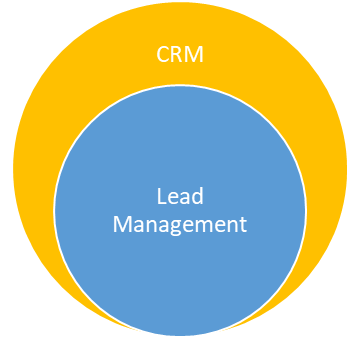Leads are the lifeblood of any business no matter how big or small. Leads are potential customers who have shown an interest in your solution but haven’t made a purchase yet. When you first start a new business, you begin with a handful of leads. As you begin to grow and scale, your sales team begins to receive more leads than they can handle. Your team can then no longer manage leads properly and equally in terms of giving them the attention they need, and things begin to fall through the cracks.

Lead management is a systematic process in which incoming leads are qualified, analyzed, and nurtured so that they can be converted into new business opportunities. In a typical sales process, leads from multiple channels enter your lead management system, and the sales-ready leads are converted into deals. You need to have a lead management platform in place if you want to make the most of prospects who are interested in your product or service.
Step 1: Lead capture
Businesses generate leads through various online as well as offline sources such as email, social media, webinars, paid ads, trade shows, and a lot more. Manually adding these leads into your CRM software is not feasible, especially when the volume is high. A good lead management system ensures that every lead is automatically fed into the system from web forms, emails, and chat, preventing leads from falling through the cracks. It also captures the source, so you know what marketing campaigns are working and what’s not.
Irrespective of the size of your business, you most likely use email every day for contacting customers, reaching out to new prospects, following up with inquiries, etc. Email clients (like Gmail, Outlook) let you send and receive emails. They also allow you to include attachments, categorize emails into folders and search emails. While a standalone email client works great for communication purposes, it falls short when you compare it with email management with a CRM.
Step 2: Lead enrichment and tracking
Once a lead enters the sales cycle in Freshsales, the lead’s profile is automatically enriched with publicly available information such as their job title, company name, and social media profiles. This ensures your sales team don’t have to spend time and effort on research and manual data entry.
Step 3: Lead qualification
An effective way to qualify leads is through Lead Scoring. Lead scoring is a methodology for ranking leads in order to determine a prospect’s sales-readiness. Leads are broadly scored on the basis of the interest they show in your product/service, their current place in the buying cycle, and their fit in regards to your business. Businesses score leads by assigning points, implementing rankings such as A, B, C, D or using terms such as ‘hot’, ‘warm’, or ‘cold’.
Step 4: Lead distribution
When your business is small, you know your sales team inside out, so manually assigning leads to the right sales reps is easy. But with the growth of your sales team as well as an increase in the number of leads, this old-school method will delay the lead response time. The sooner your sales reps contact the leads, the more likely they are to buy from you. Ideally, a good lead management system should have the capability to automatically assign leads to sales reps based on certain set criteria. By distributing leads to the right territories and sales reps, your sales team can prioritize their leads better.
Step 5: Lead nurturing
In an ideal world, every lead would be one that converts into a paying customer. But, in reality not all your leads are sales-ready. Many of them could still be in the research or awareness phase, figuring out if your product/service would serve their needs. With a lead management process in place, you can send nurture campaigns to these leads. You can educate and demonstrate the value of your product/service by sending your leads relevant content, promotional offers, etc., that nudges them forward in their decision-making process.